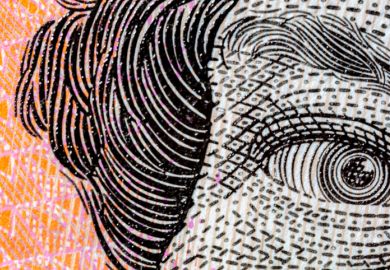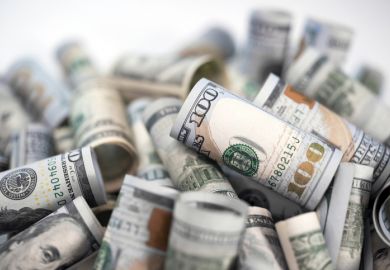Lawrence Weschler chronicles the amusing antics of J. S. G. Boggs, an American artist whose consuming passion is money. What Boggs likes to do is to draw money - actual paper notes of the major currencies of the world - and to go out and spend the drawings. Unlike most artists, he does not look for art collectors to buy them. He goes into shops and tries to persuade people to take his drawings in lieu of cash.
Weschler writes with flair about actions which seem at first sight inherently implausible. Indeed, at the outset the rather maniacal self-portrait of Boggs engraved on a dollar bill gives rise to the suspicion that the whole book is an elaborate hoax, and that Boggs only exists in the sense that, say, the poet E. J. Thribb exists. But no, Boggs is real, and is even a fellow of arts and ethics at Carnegie Mellon University.
Boggs has had considerable success with his approach. The artist even managed to live for an entire year simply by spending his drawings. He goes out of his way to make clear that his bank notes are not real ones, one side of the note being left blank. But nevertheless people are often willing to value the drawings at more than the denomination of the note he has drawn. For example, Boggs has succeeded in buying a shirt worth almost 100 dollars with a drawing of a five-dollar note. Sometimes he has paid for meals with, say, a drawing of a hundred dollar bill, and received change in actual cash.
Inevitably, his activities have brought him into contact with the law. He was arrested and tried at the Old Bailey. Weschler describes the trial and its surrounding circumstances in riveting detail. It took place against the background of the 1987 stockmarket crash, when shares of major companies dropped 10 per cent in a day. (At the same time that Boggs was being prosecuted for allegedly producing counterfeit drawings of currency, a homeless New York woman, coincidentally also named Boggs, was forcibly committed to a mental hospital for the manifestly insane behaviour of burning (real) dollar bills in public.) But despite the judge virtually ordering that he had no defence in law, he was acquitted unanimously within ten minutes.
The American authorities have been more persistent. Boggs has never been convicted, but his announced plan to bring one million dollars of notes into circulation was foiled by effective harassment of a number of potential purchasers.
The book is full of fascinating anecdotes. The country in which Boggs has experienced most difficulty is Italy. Many Italians have rejected his drawings as payment, even though their value in the art world has often been higher than the price of the goods and services Boggs was trying to buy. At the same time, they have eagerly demanded that he produce "real" counterfeit notes for them.
Perhaps surprisingly, he has had great success in Switzerland. An art gallery at one point even offered ten times the notional denomination of the bank note for any piece of Boggs's work. Remarkably, this offer attracted fakes of Boggs's fake bank notes. The gallery rejected them, but did offer the maker of a particularly good fake the face value of the bill. This was dismissed out of hand by the artist, an evident and fervent believer in Marx's labour theory of value, with the phrase "Do you know how long it took me to make this thing?"
The book does raise interesting questions throughout as to what constitutes value. Certainly, in the case of Boggs's own work, the conventional supply and demand diagrams of economic textbooks offer little guide, for the more he has produced, the easier he has found it to sell his work, and the more the price of it rises.
But the book's main attraction is simply as a witty, excellently written account of a bizarre and fascinating snippet of modern life. It unfolds almost like a detective story, and should appeal to anyone with a taste for the mysterious or the absurd.
Paul Ormerod is chairman, Post-Orthodox Economics.
Boggs: A Comedy of Values
Author - Laurence Weschler
ISBN - 0 226 89395 2
Publisher - University of Chicago Press
Price - £17.50
Pages - 160
Register to continue
Why register?
- Registration is free and only takes a moment
- Once registered, you can read 3 articles a month
- Sign up for our newsletter
Subscribe
Or subscribe for unlimited access to:
- Unlimited access to news, views, insights & reviews
- Digital editions
- Digital access to THE’s university and college rankings analysis
Already registered or a current subscriber? Login



